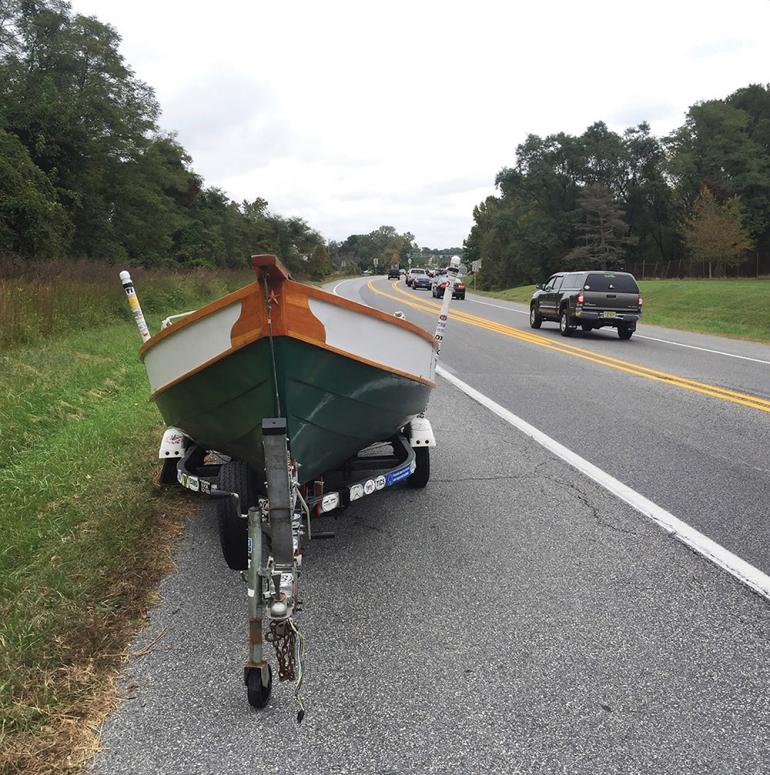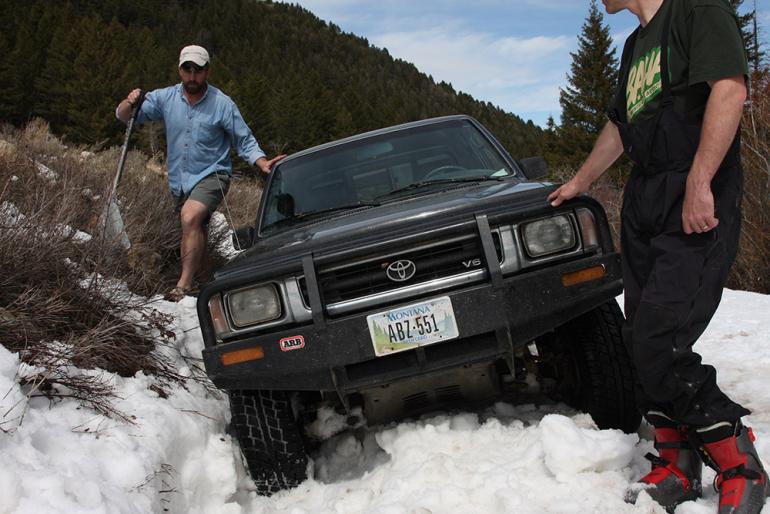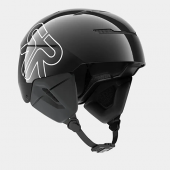One Step Ahead
How to prepare for car emergencies.
“We can’t stop here, this is bat country!” —Hunter S. Thompson
Not long ago, on the way home from fishing the upper Madison, the tongue on our trailer broke, sending the boat into a solo centerline pirouette. We pulled over and yanked it into the borrow pit before a speeding semi-truck came along, but... now what? Luckily, we had a toolbox and some spare parts, and managed to jury-rig the tongue well enough to limp into Ennis for a better fix at the hardware store. We then hit the Gravel Bar and toasted our triumph over unforeseen adversity.
With the reliability of modern vehicles and equipment, these kinds of roadside emergencies are rare. But when they do happen, it pays to be prepared. Here are some considerations to help you sing your own impromptu successes, instead of humming a morose post-snafu dirge.
Car Emergency Dos and Don’ts
Do know when to call for help.
Don’t get yourself in a stickier situation by trying to fix it yourself.
Do keep an emergency kit in your vehicle.
Don’t remove your kit to make room for more gear.
Do bring a spare key with you on long trips.
Don’t expect to always have cell service.
Do be mindful of how much room you need for people and gear.
Don’t take up all the room in your vehicle with a doomsday kit to make a prepper proud.
Emergency Kit
A long with a first-aid kit, equip yourself with some basic maintenance tackle for unexpected events on the road. For mechanical emergencies, have a multi-tool, flathead and Phillips screwdrivers, crescent wrench, a ratchet set, duct tape, pry bar, and spare headlight bulbs. For other eventualities, keep a tow-rope, a traction device, straps of varying lengths, and jumper cables on hand. Keep a flashlight or headlamp in your kit for late-night situations. It’s always good to keep a few camping basics in your vehicle, too: food, water, a sleeping bag, fire starter, and warm clothes.
Emergency-Kit Storage
All the emergency equipment in the world is useless if you don’t have the room to bring it. Here are some options.
DIY Solutions: Soft-sided bags or plastic bins secured with rope, ratchet straps, or bungee cords.
Collapsible Trunk Organizers: Soft-sided, inexpensive storage containers with separate compartments secured with Velcro, rubber feet, or straps.
Hanging Organizers: If you’re space-conscious, get some storage fabric that hangs off the back of your seats.
Truck-Bed Cases: These fit in the space between your wheel-well and the end of your bed. Most can hold up to 75 pounds of gear.
Toolboxes: Traditional toolboxes are tried and true. Just make sure yours is easily accessible.
Under-Seat Storage: This is a great option if you want to keep gear out of the elements and out of the way.
When to Fix It Yourself
If you have a flat tire—everyone who drives should know how to change a tire.
If you get stuck in the mud—that’s what you brought those chains and tow-rope for!
If your battery dies—jumper cables anyone?
If your headlight goes out—installing a new bulb takes under 10 minutes, even for novices.
When to Call AAA
If your vehicle is leaking fluid uncontrollably.
If you need a tow and it’s too dangerous for your buddy to do it.
If your axle is not responding to your steering wheel.
If malfunction lights are flashing and you don’t know how to fix the problem.















